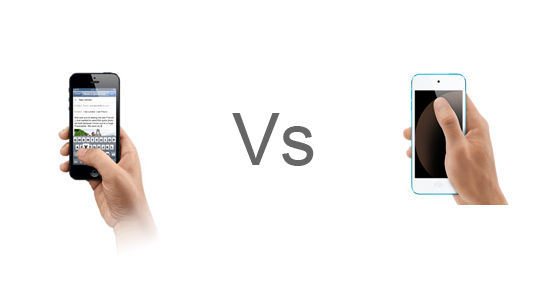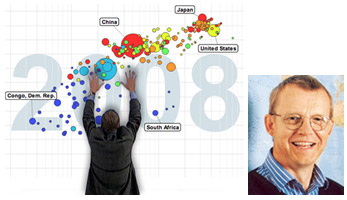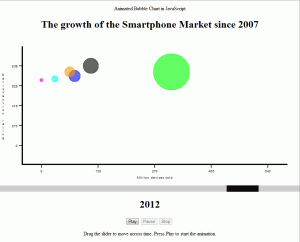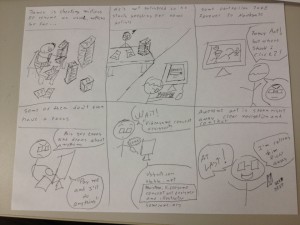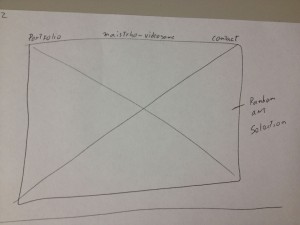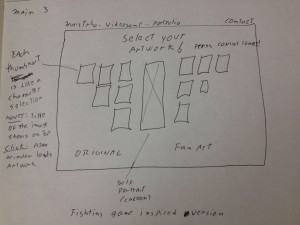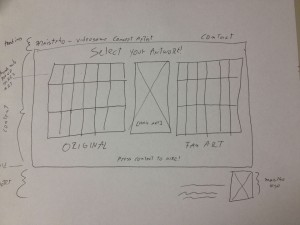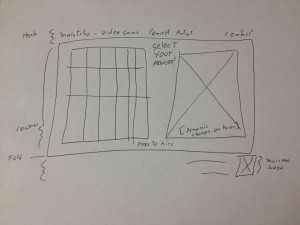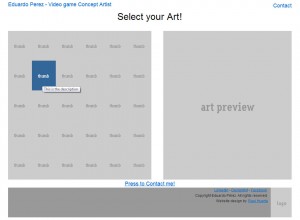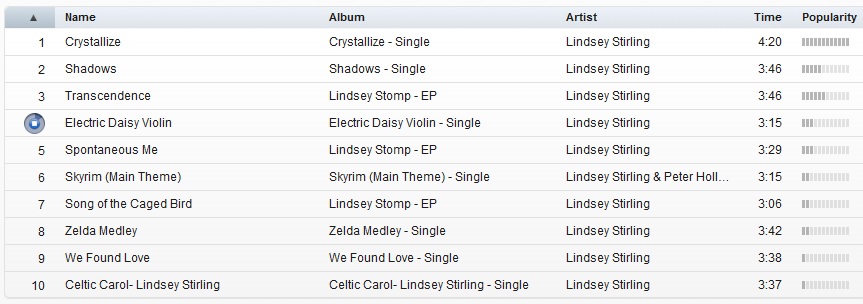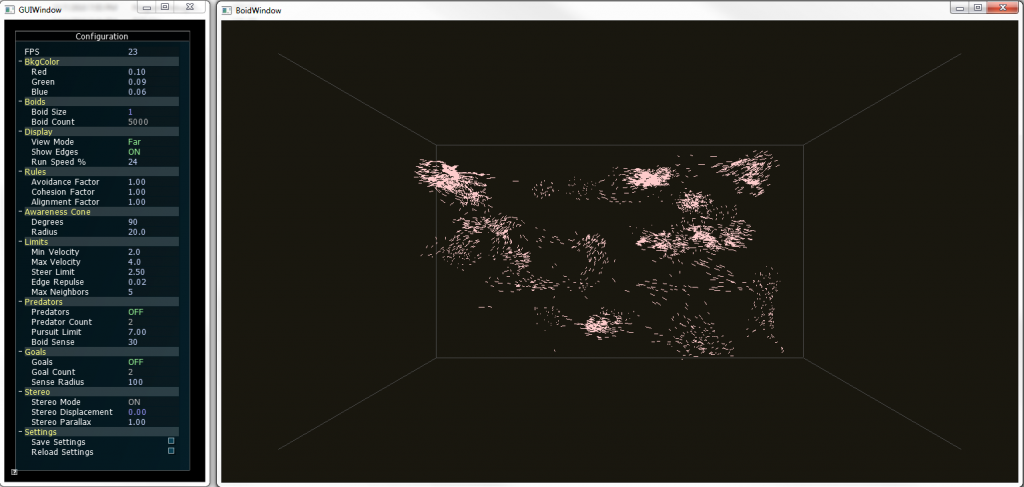Was the iPhone 5 event a let down?
Posted: September 13, 2012 Filed under: Random Talk, User Experience | Tags: Apple, iPhone, iTunes, Smartphone Leave a comment »As always, the world turned to California to check on what’s apple next offering on phones side, and also to check if there are any other upgrades to their current lineup of products and possibly the introductions of new ones.
The event in review: new iPhone, new iPods, no iPad Mini = few if any surprises. Did Apple disappoint? I don’t think so, but the iPhone 5 was heavily spoiled by the excessive leakage of the new phone parts, and that’s where most of the hype is focused on the Fall event, as always. Granted, much of the iPod news were cloudy, but except for the iPod Nano, which is the product that always changes the most, everything else was just predictable. The new iPod Touch is as expected, an iPhone 5 without the phone and few minor downgrades and featuring smaller and lighter design. Without a new product to show (bet the ones predicting the iPad Mini will move it to 2013), Apple’s event felt almost like if it wasn’t needed to begin with. Still most of them are great products, and that’s why is not a real let down, was just extremely predictable.
But let me make it clear, I don’t want to saturate the internet with even more repetition of the same information; you can check other sources for all the detailed information or even Apple’s site. What I want to do it’s a breakdown of the event and talk a bit about its products on the design and engineering perspective.
With that in mind, let’s begin!
iPhone 5
The new iPhone is bigger and small at the same time, a bit lighter and slimmer, but longer which accommodates to a new a bigger screen that is close to a standard widescreen ratio which must be amazing for consuming content. Some people criticized that Apple didn’t do a bigger screen all around and their answer had to do with ergonomics. Supposedly the width of the iPhone 5 is not bigger because it fits better in your hand, and I can surely bet that it has to do with the thumb, the finger that let us text messages and interact with different apps singlehandedly needs to reach to every part of the screen to support full interactivity with one hand. Assuming that Apple did their research they had the perfect size before, but why now add the extra height there? So the old screen had the wrong size all together or the new screen is wrong?
Here’s a video to illustrate my point:
If they designed the phone thinking about the standard human hand, I should be able to comfortably reach the top of my current iPhone screen, but if is higher I would rather slip my hand, and that’s what they do on the pics that shows how the thumb actually covers the whole screen, but again you will have to move your hand and that’s an extra step.
In the end I think is not that much about the thumb since software can be designed with that in mind, but about the hand, so in terms of making it bigger, longer was the way to go.
I actually like the new connector, the old one had almost a decade and was unnecessarily big, plus offering an adaptor at least brings an option to the consumer, but ads a lot of confusion to the product compatibility with accessories and other first and third party equipment. A new connector after a whole decade it’s ok, and I trust Apple will do the migration as painless as it can be without getting into the horrible port confusion that plagues some electronics, e.g. the display ports on the PC. In any case, by watching the advances in wireless technology we might not even need a connector in the future other than to charge it (until wireless electricity is viable).
There seem to be few changes in the back camera but a much needed upgrade on the front one, highly positive now that Facetime is going wild, and judging on how much people love to video blog or take portrait pictures, this will be just awesome.
iPods
First and foremost, what’s the deal with the strap on the new Touch? I don’t like the idea at all, iPods are products that you want to sit next to you on the bed or a sofa, sit in your pocket happily, is just changing of postions constantly and is not glued to your hand. Yes, the strap can make it more secure, but it severely limits the experience if your wear it all the time, plus, is going to tangle up with your earphones for sure. Weird idea that probably came from demographic research, but I’m not quite convinced. Other than that, the touch had is well needed refresh.
The Nano basically ignored pretty much that the 6th generation existed and went back to an evolution of the 5th, not a bad thing to do since the previous nano was more like a glorified shuffle. What I don’t quite get is why they made the design not consistent with iOS, the icons are now rounded and the home button too. Why they want to differentiate it? I assume they want to tell the user that, although this works in a similar way to iOS, is not a fully feature operative system, making it much like a focused toy, not a bad thing if the people that are being targeted wants something simple.
And the Shuffle? let’s not even start. No refresh at all, not even higher space or cheaper price, just new colors. Apple, you better had a new redesigned shuffle next year to make up for this. Definitely the biggest disappointment of the event. The reason for that is that I consider the shuffle the epitome of the simplicity and that is just about music, I love it! To think it doesn’t deserve a redesign is like saying they have a perfect product, which is never true. It can also be that they will slowly move it from the spotlight, like they did with the iPod Classic which also deserves a refresh. The iPod Classic is the only portable player with a humongous size for the person that wants to take everything with them, Apple can even evolve it to be a hub for your other iDevices so they can stream data from it.
iTunes
Finally, the refresh of the new iTunes is more than welcome. While there’s cero progress on the individual songs view, pretty much everything else is now better, and I personally love the “up next” feature, something that I was wishing for a very long time. Hopefully they translate that too to the Music Player on iOS.
Conclusion
Of course, until I haven’t tried these products I can confirm some of what I have written here. Still I wanted to state some of my hypothesis. Eventually I’ll have in my hand some of these devices and I’ll be able to tell if my early judging was correct. Is very exciting to think how some of the thinking behind these products is made since it has to appeal to so many people at the same time, and that’s why still with some of the minor problems stated here I think the event was good enough and delivered pretty cool new products to the market.
Animating 2D Bubble Charts Through Time
Posted: August 9, 2012 Filed under: Human and Computer Interaction, User Interface | Tags: JavaScript, Visualization, Web Leave a comment »Information Visualization is the area that finds better way to portray data in a visual way. Several popular visualization are used in probably all disciplines in the world, since data is everywhere and need to be analyzed. As an example, in CS is very popular to see Trees and Graphs to model everything from inheritance to data structures and even software engineering.
One of the most successful examples of Information Visualization today would be bubble charts. They are very easy to understand since they are very similar mapping wise to other very common visualizations like bar and line charts, but bubbles also add an extra dimension, the size (radius) of each bubble represents a value too.
There are many good examples of bubble charts, but probably one of the most popular ones would be Hans Rosling’s Gapminder. This has been features in several documentaries and public talks throughout the world, because they really help to get a lot of insight when it comes to analyze data though time.
What it does is that it shows bubbles in a meaningful matter, and it also supports animations that let us see how all variables move around in time. The perception of time cannot be greater than watching one thing literally moving through time.
Inspired by this, the purpose of the project is to successfully emulate this chart engine, and make it accessible in different platforms.
One of the few platforms that support this kind of compatibility would be Web technology and this means HTML, CSS and JavaScript. Now, every device has access to the internet and contains a web browser compatible with most of the features present in the most recent version of these languages. The W3C does a pretty good job trying to maintain everything standardized, and while some technologies always appear challenging this standardization, the core setup remains working on every browser.
Nowadays, the web is being constantly developed by hundreds of programmers and designers. HTML5 is closer to being a standard and with it, the web becomes even more reliable and full of features, and every day that passes relies less in applets and other private extensions that compromise out of the box compatibility with less optimized execution speeds.
Research lead to a humongous number of web site featuring projects regarding visualization, from 2D to 3D, Scientific to Informational. One that got the attention of this research was MooChart. Based on MooTools, a library made for multiple purposes, mainly interactive widgets and abstraction to the most common task in a web app, this library aimed to use the rendering engine capabilities of the moo tools to draw circle using pure JavaScript, and then plot them in two axys.
This was a good opportunity for experimenting, so the library was adopted and in very few time I had the bubble chart running on a dummy web site. Now of course, this is just part of the job to successfully create an animated time bounded bubble chart that was the needed to create the time dimension on the chart. Depending on how time was manipulated, the position of the bubble will be updated.
Each point of the bubbles in the chart was recorded in X and Y coordinates as well as the radius. The data structure used for this also allowed multiple values of this kind of data, storing each position through time. The identifier that will enumerate each moment though time was bounded to an slider, one of the best widgets for mapping time. It’s very intuitive to use: simply drag the slider to the right and time advances, drag it to the left and time moves backwards. If the slider was updated with a position, the chart was redrawn to show any change. On this implementation, change on the chart happens when the slider has a time value that is present on the data structure.
After making this work, the chart was ready to be used, but still we are not close to Roseling’s approach. When the chart was used it was still lacking a very fundamental feature that was not only really insightful and novel, but pretty impressive: the animation.
In Digital graphics Animation is done by calculating the frames when an object should be in time depending information like physics, or in this case, data behavior. The animation can’t be perfect all the time; we simply don’t have that many data samples for every millisecond of animation, and we never will. If the animation was played on the current implementation explained so far, it would be very jumpy, non dramatic and non intuitive by the lack of perceptual information, rendering it meaningless. Hence the creation of a data approximation function; the implementation needed a way to create the frames that were missing, or in other words, the points between one moment in time to the other.
Knowing that the approach taken was the creation of a recursive timer that by calculating the slope of a line between one point to the other would be able to sample the points for each movement. The timer would be able to repeat this action in an incrementally, but not going as fast as possible like a regular loop would, but in a timely, adjustable and perceivable fashion.
Since the animation will run through several points, the timer itself will end when the goal was reached and in a recursive way will call another timer function that samples the way in the following period of time, this until the last value of the chart was reached.
Linking this function to a button press even, the user of the visualization is able to click and start the animation from anywhere in time on the chart context. The user can also pause the animation. This is done by telling the function to not increase to the next sample point and simply stay in the current one until the user resumes the animation letting the movement across the sampling continue, or simply stop the animation altogether.
You can try the complete prototype which is preloaded with data from the mobile OS market share in time context. This version basically accomplishes everything I setup for the project. As expected, this visualization runs in a several devices and so far it has been tested in PCs, iPhones and iPads without problems.
In the future, more development can be added to the system by making the animation more resource efficient, and also be bounded to real time, i.e. frame skipping algorithm, so it runs at the same speed in every system. This, and a bit of code clean up could be potentially released as a plugging to MooChart project, making it available to anyone that wants to use it.
Designing a Web Portfolio – Part 1
Posted: August 2, 2012 Filed under: Human and Computer Interaction, User Experience, User Interface | Tags: HCI, IxD, UX, Web Leave a comment »Recently a friend of mine asked me to help him designing his online portfolio. He’s an Illustrator and he would like to project himself to the videogame industry as a concept artist.
Naturally a portfolio page is all about your work and how you share your ideas. The main audience is employers and people of the same business, or future co-workers. Is easy to discern that the main thing to be highlighted in the web page is the art work, easily accessible and presenting only the most significant items. Also, make very clear what the contact information is.
If I had the resources I would like to have some empirical data on how recruiters surf the web, but I can surely bet that their informavore behavior is: finding work samples as fast as possible to see if some of them will correspond to what their company needs at the moment.
So for starters, I did some research on some concept artist/illustrators portfolios. There are some good pieces out there, but not in terms of user centered design. Some of them featured a site built around the style of the artist, but they are not that easy to navigate. That is not an awful idea by any means if you want to produce an experience that is more akin to a journey, but we all know that is not what employers are necessary looking for, they want to see the material without any obstacles. In that sense, sites like this do a better work, and they are not very elaborate. This doesn’t mean that we can’t do anything fancy without having a hard to navigate page. There are many examples that do a wonderful work, making the art work the central piece of the design, straight to the point.
Just to know that we are on the same page as my client, I send him some storyboards, here is one of them:
The storyboard revolved around the idea that recruiters won’t take much time in a portfolio page, and that they wanted to see easily accessible work samples to see if the artists fit their need.
Several designs were proposed, so let’s check some of the main iterations. These are not wireframes but concepts bounded by necessary constrains, hence details like “fold” appear here to express that at least all the information presented above the fold must stay there for final specifications.
The first ones featured main sliding images with navigation menus on top or even hovering on the bottom of the image itself. Not necessarily innovative but they do a good job in letting know right the away the quality and style of the artist and fast access to a fairly straight portfolio. I tended to lean for the top menu one, to let the user know right away where they were sitting on and what they can do, nonetheless I was dissatisfied with the lack of interesting information architecture, simply many sites follow this archetypes.
Some of the iterations produced this interesting design inspired on the character selection screen found on videogame fighting games. I thought that if I could somehow make this efficient enough I could not only give the user fast access to all the portfolio material, but be more profound in this videogame concept artist focus that was attempted to achieve with the design. Identification on top, thumbs that show each artwork with the correct affordances to click and dig in into the high resolution presentation of the material, and plus, as with fighting games, a preview of the full artwork on the right for fast non-modular checking, not just bigger thumbs, but the whole thing. Pieces where falling into the right places.
Few iterations later I decided to eliminate the separation between original artwork and fan art, since a concept artist is needed most of the time to create new characters. Still the necessary links to that kind of material will be provided.
Moving on to prototypes, I started building HTML/CSS based on Blueprint, first time I try it, already love it. Previously I used 960gs for this kind of rapid web prototype, but lately I’ve been hearing a lot about this framework and I decided to give it a try. Blueprint is basically the same concept but a bit more flexible.
I made the thumbs change color when they are hovered to convey the appropriate interaction affordance, and when clicked a modal Ajax window will pop up with the full high resolution image. I tried a new jQuery plug-in on this project for this window called prettyPhoto and it worked pretty well so far, testing will tell if I stick to it.
The result is shown here:
The project is moving pretty quick, no we are working with the visual design and then some testing will be done for sure before putting it up.
Till then!.
iTunes needs better previews
Posted: July 30, 2012 Filed under: User Experience | Tags: Apple, Fix, iTunes, Music Leave a comment »A person stands in its computer browsing for new songs to listen, she happens to open iTunes and checks her favorite artist. Their last album had one of the best singles ever and she’s curious on what’s in store on the rest of the album, and is good to know that she will be using 30 seconds previews of the songs to make her next purchase decisions. The problem is that any of the song feel right, they’re not “that good”. What about the song that she heard at the radio or at a friend’s house? its supposed to be on this, their newest album but still, can’t find it anywhere.
This might have occurred to you, but although previews are an awesome feature they require author control. Like promotional video, the cover of the album or even the shows, the artist executes a certain control on the whole process to archive what is desired in terms of entertainment or even art. None the less, previews on iTunes are either created automatically or by some people behind the scenes, not the actual artist, so who decides what’s there? Who decides what’s the most important or identifiable part of a song?
Like movie trailers can make you decide if you are going to watch a movie, this previews do the same. It’s extremely important that this continues evolving, favoring the artist and indirectly, the consumer.
Simple solution for this Apple: let the artist select if they want iTunes to generate the preview for them or let them customize it to their liking. How? Let them input the portions of the song they want to use as preview. Of course there are many ways to do this, by manually putting time or by having and simple editor that lets the author select the portion in an interactive way and preview it before sending it, and even letting the artist upload pre-authored previews. Not only this solves the problem, but artist can plan in advance for this kind of previews while they are in the studio and record it in a proper way. An example of this would be that the artist creates a very simplified rehearsal of the song, or an edited portion that actually highlights the signature moments of it.
One minor complaint on the awesome experience that digital distribution provides us, and by keeping the artist happy they will provide better content and the final users will benefit from it, and of course, your company. We need to keep evolving!
From Boids to Documents – Part 3
Posted: July 21, 2012 Filed under: Random Talk 2 Comments »If you haven’t read the previous parts check the out: Part1, Part2.
We went a step ahead an incorporated Kinect support. Why? Because it can augment perception and overall experience of the visualization and because it’s fun.
So we proceed to add head tracking coupled with 3D stereo and projected it using two high definition stereoscopic projectors. The results were amazing. Here’s a quick video that I made on my tablet, it shows the use of both the regular desktop interfaces and the Kinect one:
Imagine, head tracking changes perspective according to your body movements and the 3D glasses producing a good depth effect, it is exactly as if you were watching all these elements interacting though a real window.
The visualization team here at UTPA is really proud on what has been accomplished this summer, and we still have some other stuff coming, is not over yet!.
Next post: more about my nearly done Thesis and some Software Design (UX) personal projects that are in the oven.
From Boids to Documents – Part 2
Posted: July 20, 2012 Filed under: Human and Computer Interaction, Research | Tags: App, Boids, C++, HCI, Independent Elements, Publication, Research, Visualization, WinAPI 2 Comments »If you haven’t read Part 1 head there!.
This year we started the development on this new version of the boids program. The idea: each element is a document, and they can be grouped by similarity.
In order to create such a thing now we needed a parser module that read documents like PDF files and create a data structure that provides the similarity between each of them. That was done entirely by a partner while I was focusing in the visualization itself.
As the paper describes the idea was to create a 4th rule to the Boids Algorithm that basically will direct the element to get nearer other similar elements. There are several ways to do this and they are described on the publication. We applied that idea along a modified algorithm designed by myself that easily takes the similarity values into cohesion like behavior. The results were pretty impressive after some tweaking on the other rules.
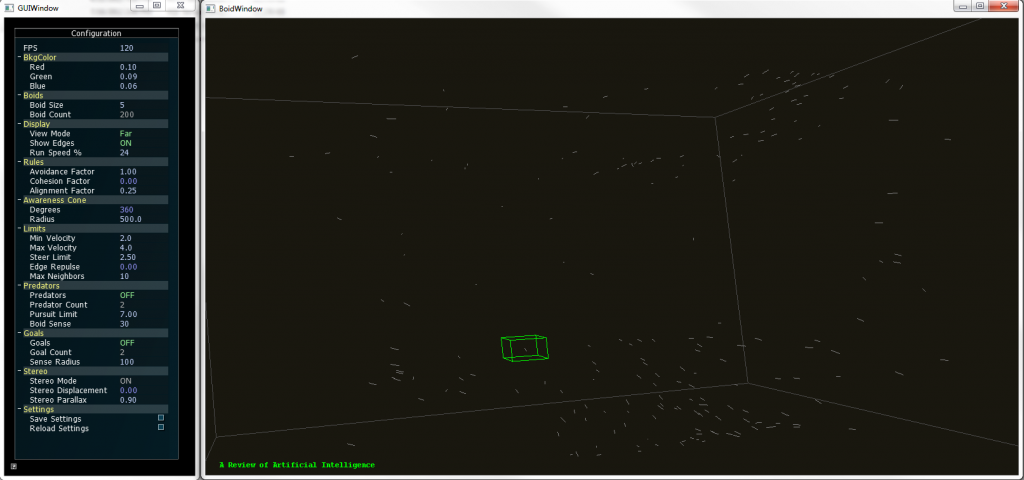
The new version supports full navigation and selection of individual elements. The title of the document can be seen while a selection is made.
To provide more insight to the user on the visualization we developed a coloring code were the user simply selects a keyword and the documents that contain that keyword would be highlighted with a user selected color. Going beyond that, the user could select an element to show the title of that particular document and even open it from that interface.
We also added freeform movement and other interactions that let the user move around the 3D space.
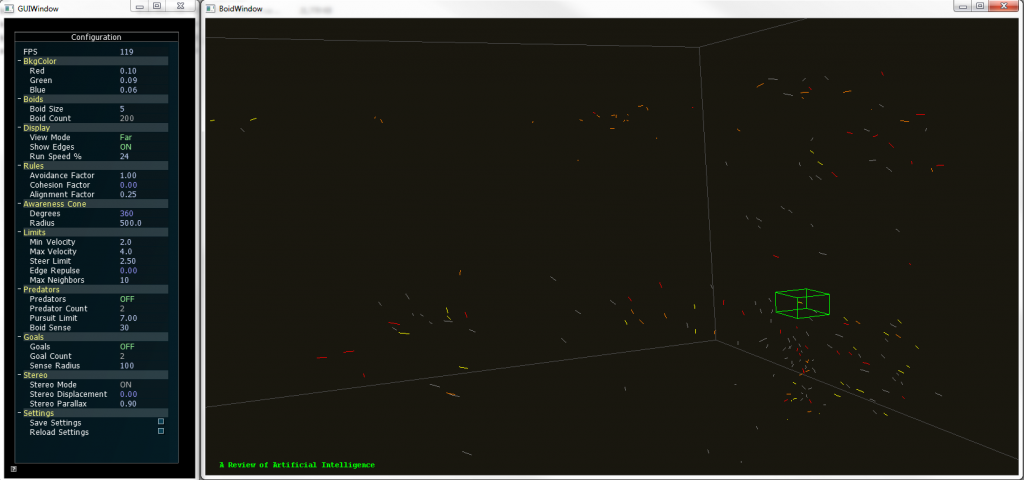
Boids 2.0 supports coloring of up to two keywords, so the documents that contain a particular them are highlighted, if they contain both keywords they show a mixed color. All these features can be configured by the user in real time.
In other words, we developed a whole different way to browse documents and the application served as a proof of concept for a different take on visualizing documents. And we didn’t stop there.
Tune in next time to know how we added Kinect support to the whole thing!.
From Boids to Documents – Part 1
Posted: July 19, 2012 Filed under: Human and Computer Interaction, Research | Tags: Boids, C++, HCI, Independent Elements, OpenGL, Stereoscopy, Visualization, WinAPI 2 Comments »Here’s some information on the projects as promised.
On Summer 2010 I was approached by my HCI instructor, I have already told him about my interest in the area and that I feel good to go and start working on some projects. My instructor expertise relies on Data and Scientific Visualization and he had something beign cooked at the moment. A fellow student was working in a independent agents program that visualizes several objects in a 3D space with a very dynamic behavior inspired by nature: they tend to group and navigate in this space just like flocks of birds, swarm of insects and banks of fishes do, and they can react to their environment in different ways.
This “Boids” algorithm is very popular and is used in several graphical applications like videogames and movies due to its approximation to the real behavior of these animals without necessarily simulating the way nature does, all with very simple algorithm that is not heavy computationally speaking. Being it for real time or pre rendered presentations the technique really outstanding.
Sort of like that, get the idea?
Well, I jumped into the project and did some optimization to the code and developed some interactions that were needed to further use the application in experimental setups, later we added 3D stereo to it using active shutter glasses, and let me tell you, watching thousands of elements floating out of the screen can be pretty amazing.
The previous picture shows about five thousand elements forming groups on 3D space. You could put other objects that can be either attract (food) or repel (predators) the boids, and you will see them reacting exactly as animals with similar behavior will do. Everything was done using C++, WinAPI and OpenGL. Project was finished and ready to go.
Fast-forward to 2012, a theoretical research was going on based on this technique: What if each element metaphorically represented a document? Well yes it would be a mess, but what if we can actually sort them out by some factor of similarity? No we are talking; we could visualize big structures of documents grouped together in clusters according to its similarity.
That’s what the newest paper is all about, and I’ll tell you how we developed a prototype in the next post.
New publications
Posted: July 9, 2012 Filed under: Human and Computer Interaction | Tags: HCI, Publication, Research, Visualization, VR 1 Comment »Next week some of the work done on my graduate research time will be published on the he 9th International Conference on Modeling, Simulation and Visualization Methods (MSV’12) and the 16th International Conference on Computer Graphics and Virtual Reality (CGVR’12). We have been hard working on some visualization techniques and some VR practices that are pretty exciting:
- Visualization and Clustering of Document Collections Using a Flock-based Swarm Intelligence Technique.
- Designing a Low Cost Immersive Environment System Twenty Years After the First CAVE.
My plan is that after the conference I’ll publish some related material on the site and the blog about the implementation of those ideas, so stay tuned for that.
Also, if you haven’t noticed, my we page is finally up. Still I have to upload more portfolio material. That will be fixed in the coming weeks.
How to Fix the “Visible Hands” issue on UDK
Posted: February 3, 2012 Filed under: Game Development | Tags: Fix, Tutorial, UDK, Videogames Leave a comment »Yesterday I made a quick video on how to fix a UDK issue that happens when you activate the no default inventory option on it. There are several ways to deal with it, but this is the most quick and simple way to do it.
Hope is useful to you!
Not quite what you expected – Condition ONE
Posted: January 5, 2012 Filed under: Human and Computer Interaction, User Experience | Tags: App, Immersion, iPad, Not quite what you expected 1 Comment »It’s extremely surprising how in this industry we find innovation almost daily. Anyone that tries to stay updated with everything that happens will tell you how hard it is to do it. But in the end there are a lot of solutions that are based in an idea that on its implementation it’s not quite what the concept was aiming for.
Most of ideas will begin in something like “wouldn’t it be cool if we do this” and then from it derivate to something more specific and possible, something like “wouldn’t it be cool if do this for this line of users on this age range, with this particular need and this certain times of the day”. And yes, they seem well structured, and the evaluation for the technology needed seems to be a good fit. But in the interactive world particularly the evaluation or development of the technology needed or the content itself fails often and products are rushed to the market as good ideas but poor execution.
Recently I was checking on the Condition ONE app on the App Store. It’s an app that basically immerses you in different scenes where different things happen, mostly documentaries about certain events, reports, etc. The way this works is that the app plays a video that is interactive in a way that you can move the device anywhere and basically change the perspective of the camera. Having the 360 degree power to look at the surroundings of the happenings, trying to emulate the feeling of being there.
Take a look at the video below and you will get a good representation on how the offering works:
Condition ONE Demo from Danfung Dennis on Vimeo.
Awesome right?, not quite. I was thrilled to try it but I was already expecting some hiccups on the road. The thing is most of this type of application rely on accelerometers or gyroscopes (or both) that checks constantly for the position of the device. Most of portable products nowadays use it perfectly for detecting screen orientation and it works alright. Some even use compass features and sometimes the sensors are that reliable that you can some pretty precise work. Also we have seen it countless times on pedometer apps and games.
Now if you want to use this for something like controlling a perspective it might not be perfect. To begin with you need a reference or a point to be the horizon, and then form there on move the perspective. Some Wii games, for example, will suggest you to point to the center of the screen before interacting with the camera or simple tell you to point to the center and recalibrate the camera with a button. This app does that with a button called center. I know what it does, but not any common user that used the app.
After that it gets really annoying is not well made for the experience. You don’t have control over focus or depths so some scenes are way too close to look properly at something interesting and you end up missing the whole point. Also it was filmed with shaking hands and that creates a lot of disorientation if your device is not moving at all or doesn’t feel like is responding properly. This is very important if the Condition ONE team attempts to create immersion because this particulars problems make the user seems like it doesn’t have the control over its actions.
But this is not an entirely a bad thing because from mistakes there’s learning and from learning there’s success. This errors can be fixed to adapt to the technology present on the iPad easily with a fixed design and a 1.5 release of this app that could be usable and not just something to toy with a couple of minutes and then not ever launch it again. The calibrating issue is workable by teaching the user how to use the app, and the video issue could be tweaked to be more stable and well thought. Some more controlled documentaries could help to experiment a little better with this before going to the field. Also, make it really worthwhile to see the whole spectrum of the scene, and when you focus on something give cues to the user so it redirects its attention there.
Condition ONE team, you’ve got something pretty cool here, don’t drop it, polish it and make it shine!. Also, this would be so cool in a CAVE like environment!.
